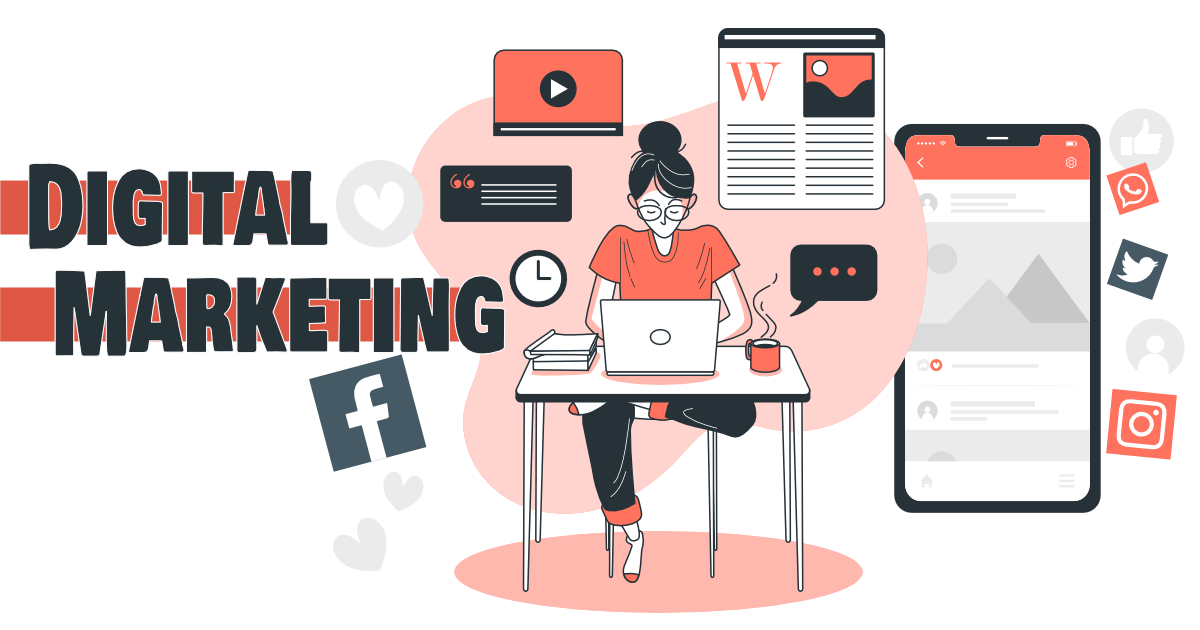Starting a business is an exciting and challenging endeavor. One of the most critical aspects of building a successful business is acquiring and retaining customers. In the early stages of a business, customer acquisition and retention are crucial to the growth and sustainability of the company. Without customers, a business cannot generate revenue and ultimately survive. Therefore, it is important to have a solid understanding of how to effectively acquire and retain customers. This includes identifying target customers, developing a value proposition, creating a customer acquisition strategy, and implementing retention tactics. In this article, we will explore the importance of customer acquisition and retention in the early stages of a business and provide tips on how to effectively acquire and retain customers.
Understanding the importance of customer acquisition and retention in the early stages of a business
Acquiring customers is the process of attracting and converting potential customers into paying customers. This includes identifying target customers, developing a value proposition, creating a customer acquisition strategy, and implementing tactics to attract customers. In the early stages of a business, customer acquisition is critical to generating revenue and establishing a customer base. Without customers, a business cannot generate revenue and ultimately survive.
Retaining customers is the process of keeping existing customers engaged and satisfied with a business. This includes implementing retention tactics, such as loyalty programs, personalization, and providing excellent customer service. Retaining customers is important because it is more cost-effective to retain existing customers than to acquire new ones. In the early stages of a business, retention is critical to establishing a stable revenue stream and building a reputation for quality products or services.
To effectively acquire and retain customers, it is important to understand the customer journey and identify potential pain points. This includes conducting market research to understand customer needs and preferences, creating a value proposition that addresses these needs, and implementing tactics to acquire and retain customers.
One strategy for acquiring customers is to create a comprehensive marketing plan that includes tactics such as social media advertising, content marketing, and email marketing. These tactics can be used to reach potential customers and create awareness of your business.
To retain customers, businesses can implement tactics such as loyalty programs, personalization, and providing excellent customer service. These tactics can be used to keep customers engaged and satisfied with a business.
In addition, businesses should regularly collect and analyze customer feedback to understand their needs and preferences. This feedback can be used to improve products and services and to identify areas of improvement.
In conclusion, customer acquisition and retention are critical in the early stages of a business. Businesses should understand their target customers, develop a value proposition, and implement tactics to acquire and retain customers. By understanding the customer journey and regularly collecting and analyzing customer feedback, businesses can effectively acquire and retain customers, and ultimately grow and thrive.
Strategies for identifying and targeting your ideal customers
Identifying and targeting your ideal customers is a crucial step in the process of building a successful business. Understanding who your customers are and what they need is essential to creating a product or service that resonates with them and generates revenue. In this article, we will discuss strategies for identifying and targeting your ideal customers.
The first step in identifying your ideal customers is to conduct market research. Market research involves gathering information about your target market, including demographics, psychographics, and buying habits. This information can be collected through surveys, interviews, focus groups, and online research. By understanding your target market, you can create a buyer persona, which is a detailed representation of your ideal customer.
Once you have a clear understanding of your target market, you can use this information to develop a value proposition. A value proposition is a statement that clearly communicates the benefits of your product or service to your target customers. It should address the needs and pain points of your target market and explain how your product or service is unique and superior to those of your competitors.
Once you have developed a value proposition, you can use it to create a customer acquisition strategy. A customer acquisition strategy is a plan for attracting and converting potential customers into paying customers. This may include tactics such as social media advertising, content marketing, and email marketing. These tactics can be used to reach potential customers and create awareness of your business.
In addition to using digital marketing techniques, it is also important to build relationships and network with potential customers. Networking events, trade shows, and industry events are excellent opportunities to connect with potential customers and establish relationships. Building relationships with potential customers can help to create trust and increase the likelihood of them becoming paying customers.
Another important strategy for identifying and targeting your ideal customers is to leverage social media. Social media platforms such as Facebook, Instagram, and Twitter can be used to reach potential customers and create awareness of your business. By creating a strong social media presence, businesses can attract and engage with potential customers and build relationships.
Once you have acquired customers, it is crucial to retain them by providing excellent customer service. Implementing tactics such as loyalty programs, personalization, and providing excellent customer service can help to keep customers engaged and satisfied with a business.
In conclusion, identifying and targeting your ideal customers is a critical step in building a successful business. By conducting market research, developing a value proposition, creating a customer acquisition strategy, building relationships, leveraging social media, and providing excellent customer service, businesses can effectively acquire and retain customers, and ultimately grow and thrive.
Techniques for creating effective marketing campaigns and promotions to acquire new customers
Acquiring new customers is a vital part of growing any business. However, it can be challenging to stand out in a crowded market and attract the attention of potential customers. In this article, we will discuss techniques for creating effective marketing campaigns and promotions to acquire new customers.
The first step in creating a successful marketing campaign is to define your target market. By understanding who your ideal customers are, you can tailor your marketing efforts to speak directly to them. This includes identifying their demographics, psychographics, and buying habits.
Once you have defined your target market, you can develop a unique selling proposition (USP). A USP is a statement that communicates the unique benefits of your product or service and how it addresses the needs of your target customers. This USP should be the foundation of all your marketing efforts.
One effective technique for acquiring new customers is to create a content marketing strategy. Content marketing involves creating valuable and informative content that addresses the needs and interests of your target market. This can include blog posts, videos, infographics, and social media posts. By providing valuable information to potential customers, you can establish yourself as a thought leader in your industry and attract potential customers to your business.
Another technique for acquiring new customers is to leverage the power of social media. Social media platforms such as Facebook, Instagram, and Twitter can be used to reach potential customers and create awareness of your business. By creating a strong social media presence, businesses can attract and engage with potential customers and build relationships.
Influencer marketing is another technique that can be used to acquire new customers. Influencer marketing involves partnering with individuals who have a large and engaged following on social media. These influencers can promote your business to their followers, increasing your reach and visibility.
Email marketing is another effective technique for acquiring new customers. By collecting email addresses from potential customers and sending them targeted promotions and offers, businesses can keep their brand top of mind and encourage repeat purchases.
Finally, it is important to measure and analyze the effectiveness of your marketing campaigns. By using tools such as Google Analytics and Facebook Insights, businesses can track the performance of their campaigns and make data-driven decisions about future marketing efforts.
In conclusion, acquiring new customers is essential for the growth of any business. By defining your target market, developing a unique selling proposition, creating a content marketing strategy, leveraging social media, partnering with influencers, using email marketing, and measuring and analyzing campaign performance, businesses can effectively acquire new customers and drive growth.
How to use social media and online platforms to acquire and engage new customers
Social media and online platforms have become an essential tool for businesses looking to acquire and engage new customers. With over 3.6 billion people worldwide using social media, it’s no surprise that businesses are turning to these platforms to reach their target market. In this article, we will discuss how businesses can use social media and online platforms to acquire and engage new customers.
First and foremost, businesses need to establish a presence on the social media platforms where their target market is most active. This includes platforms such as Facebook, Instagram, Twitter, and LinkedIn. By creating a business profile on these platforms, businesses can share their products, services, and promotions, and attract potential customers.
Once a business has established a social media presence, they can use various strategies to acquire and engage new customers. One effective strategy is to create and share valuable and informative content. This can include blog posts, videos, infographics, and social media posts. By providing valuable information to potential customers, businesses can establish themselves as thought leaders in their industry and attract potential customers to their business.
Another strategy for acquiring new customers on social media is to leverage the power of Influencer marketing. Influencer marketing involves partnering with individuals who have a large and engaged following on social media. These influencers can promote your business to their followers, increasing your reach and visibility.
Social media advertising is another powerful strategy for acquiring new customers. By using platforms such as Facebook and Instagram, businesses can target specific demographics and interests, and reach potential customers who are most likely to be interested in their products or services.
Engaging with potential customers is also an important strategy for acquiring new customers. This includes responding to comments, messages and reviews, and actively participating in online conversations related to your industry. By engaging with potential customers, businesses can build relationships and trust, and encourage potential customers to become paying customers.
Finally, it’s important to measure and analyze the performance of your social media efforts. By using tools such as Facebook Insights, businesses can track the performance of their social media campaigns and make data-driven decisions about future efforts.
In conclusion, social media and online platforms are powerful tools for businesses looking to acquire and engage new customers. By establishing a presence on the platforms where their target market is most active, creating and sharing valuable content, leveraging influencer marketing, using social media advertising, engaging with potential customers, and measuring and analyzing campaign performance, businesses can effectively acquire and engage new customers on social media.
The role of SEO and content marketing in driving website traffic and acquiring new customers
Search Engine Optimization (SEO) and content marketing are two important strategies for driving website traffic and acquiring new customers. By optimizing your website and creating valuable and informative content, businesses can attract potential customers to their website and increase their visibility online.
One of the key components of SEO is keyword research. By researching the keywords that potential customers are using to search for products or services like yours, businesses can optimize their website and content for those keywords. This includes incorporating keywords into website copy, meta tags, and image alt tags, as well as creating content that is optimized for those keywords.
Another important aspect of SEO is link building. This includes acquiring links from other websites to your website. These links act as a vote of confidence from other websites, indicating to search engines that your website is valuable and relevant.
Content marketing is another important strategy for driving website traffic and acquiring new customers. By creating valuable and informative content, businesses can attract potential customers to their website and establish themselves as thought leaders in their industry. This can include creating blog posts, videos, infographics, and e-books that provide valuable information to potential customers.
By creating content that is optimized for keywords and sharing it on social media and other online platforms, businesses can increase their visibility online and attract potential customers to their website. Additionally, content marketing can also help with link building, as other websites may link to your content if they find it valuable and informative.
It’s also important to measure and analyze the performance of your SEO and content marketing efforts. By using tools such as Google Analytics and SEMrush, businesses can track the performance of their website and content, and make data-driven decisions about future efforts.
In conclusion, SEO and content marketing are two powerful strategies for driving website traffic and acquiring new customers. By researching keywords, optimizing website and content for those keywords, building links, creating valuable and informative content, and measuring and analyzing performance, businesses can increase their visibility online and attract potential customers to their website.
Tips for creating a customer retention plan and keeping customers engaged
Creating a customer retention plan and keeping customers engaged is crucial for the success of any business. Happy and satisfied customers not only bring in repeat business, but they also act as advocates for your brand, helping to attract new customers through word-of-mouth. Here are some tips for creating a customer retention plan and keeping customers engaged:
- Understand your customer: Knowing your customers and their needs is key to creating a retention plan that will work for them. By understanding their pain points, preferences, and buying habits, businesses can create personalized experiences that will keep them coming back.
- Communicate regularly: Keeping in touch with your customers on a regular basis is important for building relationships and keeping them engaged. This can include sending out newsletters, hosting events, or simply reaching out to check in.
- Provide excellent customer service: Providing exceptional customer service is key to keeping customers engaged and satisfied. This includes responding to customer inquiries and complaints in a timely and efficient manner, as well as going above and beyond to meet their needs.
- Reward loyalty: Showing appreciation for your customers’ loyalty is a great way to keep them engaged. This can include offering loyalty programs, discounts, or other incentives for repeat business.
- Use technology: Utilize technology to stay connected with your customers and make it easy for them to interact with your business. This can include creating a mobile app, using social media, or implementing a customer relationship management system.
- Gather feedback: Gather feedback from your customers on a regular basis to understand their needs and preferences. This can include conducting surveys, focus groups, or one-on-one interviews.
- Continuously improve: Continuously strive to improve your products, services, and customer experience. Use the feedback you gather to make changes and improve your retention plan.
In conclusion, a customer retention plan is a crucial component of any successful business. By understanding your customers, communicating regularly, providing excellent customer service, rewarding loyalty, using technology, gathering feedback, and continuously improving, businesses can keep customers engaged and satisfied, leading to repeat business and positive word-of-mouth.
The importance of creating a positive customer experience and building customer loyalty
Creating a positive customer experience and building customer loyalty is essential for the long-term success of any business. Customers who have a positive experience are more likely to return and recommend your business to others, while loyal customers can provide a steady stream of repeat business. Here are some strategies for creating a positive customer experience and building customer loyalty:
- Make it easy for customers to do business with you: Simplify the process of interacting with your business as much as possible. This can include having a user-friendly website, providing clear instructions, and making it easy for customers to find the information they need.
- Be responsive and proactive: Respond to customer inquiries and complaints in a timely and efficient manner. Be proactive in addressing any issues that may arise, and go above and beyond to meet their needs.
- Personalize the customer experience: Personalizing the customer experience is an effective way to build loyalty. This can include remembering customers’ names and preferences, or creating personalized promotions and offers.
- Offer incentives for repeat business: Reward customers for their loyalty with discounts, loyalty programs, or other incentives. This encourages repeat business and helps to build long-term customer relationships.
- Use customer feedback to improve: Gather feedback from customers on a regular basis and use it to improve your products, services, and overall customer experience. Respond to feedback and make changes as needed.
- Go the extra mile: Delivering excellent customer service and going the extra mile to meet the needs of your customers will help to create a positive customer experience and build loyalty.
- Build a community: Creating a sense of community among your customers can help to build loyalty and foster positive customer experiences. This can include hosting events, creating a social media group, or other activities that bring customers together.
In conclusion, creating a positive customer experience and building customer loyalty is essential for the long-term success of any business. By making it easy for customers to do business with you, being responsive and proactive, personalizing the customer experience, offering incentives for repeat business, using customer feedback to improve, going the extra mile, and building a community, businesses can create a positive customer experience that leads to repeat business and positive word-of-mouth.
How to gather customer feedback and use it to improve your products and services
Creating a positive customer experience is crucial for any business, and it starts with understanding the needs and wants of your target audience. One way to gather this information is through customer feedback. By gathering customer feedback, you can gain valuable insights into what your customers like and dislike about your products or services, as well as what they would like to see in the future.
One effective way to gather customer feedback is through online surveys. These can be sent out via email or posted on your website or social media channels. Another way to gather customer feedback is through in-person or phone interviews. By speaking directly with your customers, you can gain more detailed and personal insights into their experience with your business.
Focus groups are also a great way to gather customer feedback. These are typically small groups of customers that are brought together to discuss a specific topic related to your business. These discussions can be moderated by a professional facilitator to ensure that all participants are able to share their thoughts and opinions.
Additionally, you can use analytics and metrics to measure customer engagement and validate your business idea. These metrics can be used to track customer engagement on your website, social media channels, and other platforms. Analyzing these metrics can give you a better understanding of which marketing campaigns are working, and which are not.
Once you have gathered customer feedback, it’s important to use this information to make improvements to your products and services. This can include making changes to your products or services based on customer feedback, or creating new products or services that address specific customer needs.
Another key aspect of customer retention is building customer loyalty. This can be achieved by creating a positive customer experience, providing excellent customer service, and regularly communicating with your customers. This can include sending out regular newsletters, hosting customer appreciation events, or offering exclusive deals or promotions to repeat customers.
In summary, customer acquisition and retention are crucial for the success of any business, and it starts with understanding the needs and wants of your target audience. By gathering customer feedback, analyzing metrics, and making improvements to your products and services, you can create a positive customer experience and build customer loyalty, ultimately leading to a successful business.
The role of email marketing and customer communication in retention
Email marketing is a powerful tool for customer retention in the early stages of a business. It allows you to communicate with your customers on a regular basis and keep them engaged with your brand. By sending out newsletters, promotional offers, and other types of content, you can keep your customers informed about your business and remind them of the value you provide.
One of the key benefits of email marketing is that it allows you to segment your customer base and tailor your messages to different groups of people. For example, you can send different emails to customers who have recently made a purchase, customers who haven’t made a purchase in a while, and customers who have shown an interest in specific products or services. This allows you to target your communications and make them more relevant to the recipient.
Another benefit of email marketing is that it allows you to track the performance of your campaigns. By using tools such as open rates, click-through rates, and conversion rates, you can see which emails are resonating with your customers and which ones aren’t. This allows you to make adjustments to your campaigns and improve their effectiveness over time.
To get the most out of email marketing, it’s important to focus on building a strong email list. This can be done by offering a sign-up incentive, such as a discount or a free resource, and by making it easy for customers to opt-in to your email list. It’s also important to be consistent with your communications and to avoid sending too many emails, as this can lead to unsubscribes.
In addition to email marketing, it’s important to use other forms of communication to stay in touch with your customers. This can include phone calls, text messages, and social media messages. By using a mix of different communication channels, you can ensure that you’re reaching your customers where they are most likely to engage with your brand.
Overall, email marketing and customer communication are essential for retention in the early stages of a business. By staying in touch with your customers and providing them with valuable content, you can build stronger relationships and increase the likelihood that they will continue to do business with you.
The role of rewards and incentives in retaining customers
The early stages of a business are crucial for its growth and success. One of the most important aspects of this stage is customer acquisition and retention. A business that is able to attract and retain customers will have a better chance of survival and growth than one that struggles in these areas. One powerful tool that entrepreneurs can use to achieve this goal is rewards and incentives.
The role of rewards and incentives in retaining customers is two-fold. Firstly, these programs can help increase customer satisfaction and loyalty, leading to repeat business and positive word-of-mouth recommendations. For example, a rewards program that offers special discounts or exclusive access to certain products or services can make customers feel valued and appreciated. This can increase their likelihood of returning to the business in the future. Additionally, rewards and incentives can also be used to encourage customers to try new products or services offered by the business. For example, offering a discount or bonus points for customers who try a new product can be a great way to introduce them to something new and encourage them to continue using the business in the future.
Secondly, rewards and incentives can make it more convenient and cost-effective for customers to continue doing business with the company. For example, a loyalty program that offers points or cash back for purchases can make it more appealing for customers to continue shopping with the business, rather than switching to a competitor. This is especially important for start-ups and new businesses that are still building their customer base and need to hold onto every customer they can.
It is important to note that rewards and incentives programs should be designed in a way that is relevant to the customer. Offering rewards or incentives that are not appealing or useful to the customer will not be effective in retaining them. Therefore, it is important to conduct research and gather customer feedback to ensure that the rewards and incentives being offered align with their needs and preferences.
In conclusion, rewards and incentives can play a key role in customer retention for businesses in the early stages. By providing customers with a sense of exclusivity, convenience, and value, entrepreneurs can increase customer satisfaction and loyalty, leading to repeat business and positive word-of-mouth recommendations. By effectively using these tools, entrepreneurs can give their business a better chance of survival and growth in the highly competitive world of entrepreneurship.













